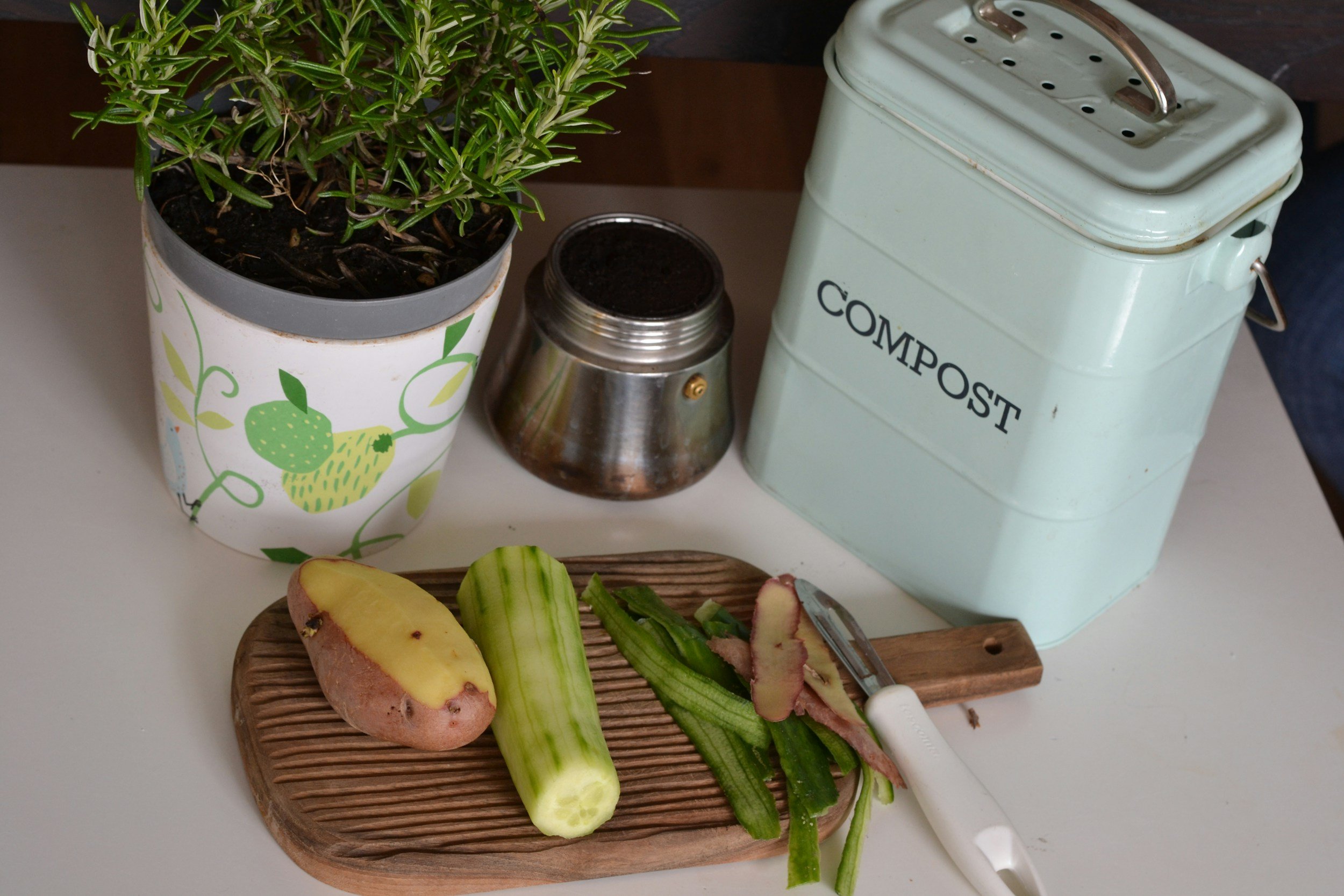In each of our homes there are countless ways to become more sustainable, all it requires is changing our mindset. Instead of opting for the easiest, most convenient solution – like grabbing a paper towel – think twice and set up a new more sustainable habit. Each little change has an impact that compounds over time. Here are 5 ways to become more sustainable in your home, often you will not only help protect our planet but also save yourself some money!
1. Start a vegetable garden.
How?
This doesn’t need to be an expensive endeavor.
-
Decide based on your space and type of vegetables which you will plant, the type of container that is feasible.
-
Make a plan to plant and water the garden.
-
Find a community garden in your area if you need more space.
Why?
-
Excellent source of exercise and fresh air.
-
Teach your children about food production.
-
Save money.
-
Share the bounty with friends and family – community gardens are wonderful social spaces.
Impact!
If you value a life-centric approach, this is an important change to make
-
There are few greater rewards than growing your own food – fresh, flavorful food, stress reduction, cost savings up to $2149.15
-
Helps remove CO2 from the environment!
2. Go Paper-towel free.
How?
-
Pay attention to how, when, when, and how much paper towels you use.
-
Identify the tasks where you use paper towels, such as cleaning surfaces, absorbing grease while cooking, drying dishes, or wiping up messes.
-
Mount a hook near your sink and reach for an absorbent dish towel of 100% cotton or linen instead.
-
Buy reusable bamboo sheets that can be washed and reused
Why?
-
The majority of paper towels are made of virgin paper since recycled paper is not as absorbent.
-
The bleaching process used to make the paper towels “white” is polluting to our water.
Impact!
If you value an earth-centric approach, this is an important change to make.
-
Save money (about $268 per year) and trees!
-
Using washable towels means that you will never run out!
3. Install low-flow water fixtures.
How?
-
They are relatively easy and inexpensive to install.
-
Do your research, there are different types of low-flow fixtures (ie) aerating or laminar technology, to determine which ones make sense for you.
Why?
-
Reduce water consumption by 15-20%.
-
Reduce energy needed to heat water that is wasted.
Impact!
If you value an earth-centric approach, this is an important change to make.
-
Adoption of low flow taps and shower heads at a greater than 80% rate by 2050 (we are only at 50% right now) could reduce CO2 equivalent emissions by 0.93–1.52 gigatons.
4. Implement Smart Home Technology.
How?
-
Installing items like smart thermostats allow for flexibility to control your home’s temperature remotely and in a more agile fashion.
-
They often use the same wiring as existing thermostats and are an easy upgrade.
-
Read reviews such as consumer reports to determine which one makes the most sense for you.
Why?
-
Convenience, manage your home devices remotely.
-
Increase energy efficiency with the ability to program according to your needs and schedule..
-
Get better insight into appliance usage.
-
Increased safety with remote access and monitoring.
Impact!
If you value an earth-centric approach, this is an important change to make.
-
Smart thermostats can save their owners almost $2T in utility bills over the lifetime of the units.
5. Manage your trash.
How?
-
Reduce your trash.
-
Pay attention to the packaging and try to buy items in eco friendly packaging.
-
Bring your own produce bags or reusable shopping bags to the grocery.
-
-
Eliminate buying single serve food & beverage items.
-
Use a soda stream instead of buying cans of carbonated beverage.
-
-
Freeze food that can’t be eaten immediately
-
Learn how to recycle properly.
-
Start a compost pile or consider a countertop composter.
-
Use certified compostable garbage bags.
Why?
-
Composting protects the climate by reducing methane emissions from landfills.
-
Of the 60+ million tons of wasted food generated in the food retail, food service and residential sectors in the United States only 5% of that wasted food is composted.
-
Decomposing organic material in landfills generates methane, a powerful greenhouse gas
-
Approximately 14% of greenhouse gasses come from landfills and wasted food is responsible for 58% of landfill methane emissions.
-
Recycling reduces waste sent to landfills and incinerators preventing pollution.
-
Recycling conserves natural resources and energy.
-
Managing your trash creates green jobs.
Impact!
If you value an earth-centric approach, this is an important change to make.
-
Save money! The average American family of four throws out $1,600 a year in produce.
-
Protect our natural resources.
-
Making recycled aluminum only takes around 5% of the energy needed to make new aluminum.
-
Using recycled steel saves enough energy to power 18 million homes for a year.
-
About 110 million glass bottles are thrown away every day in the U.S., of which only one-third get recycled.
-
Reduce methane gas.
-
If everyone in the US composted, it would be the equivalent of removing 7.8 million cars from the road.
-
Each year, home composting could divert 330 pounds of food waste per household from landfills.

